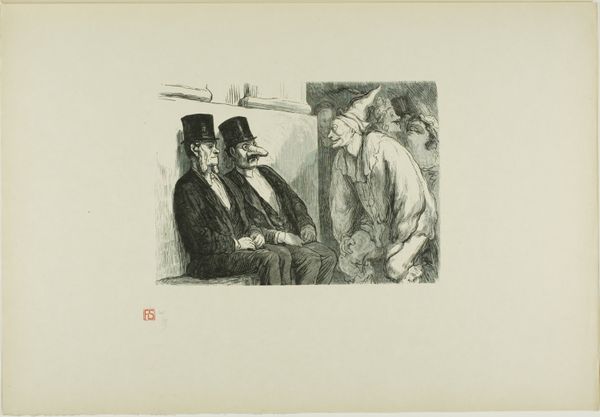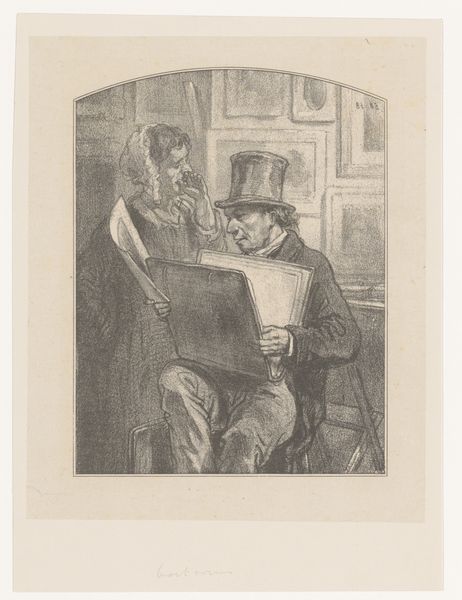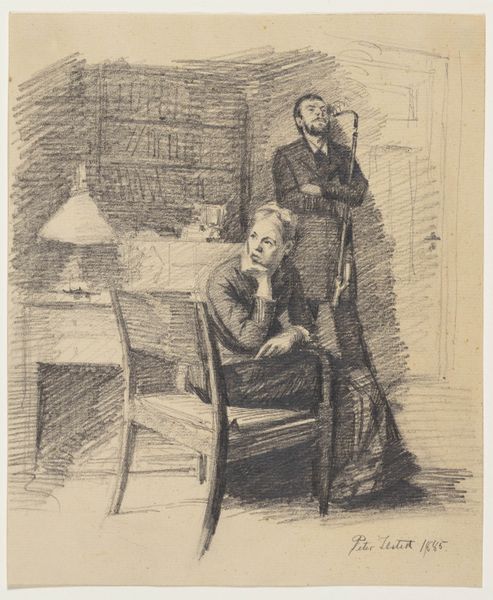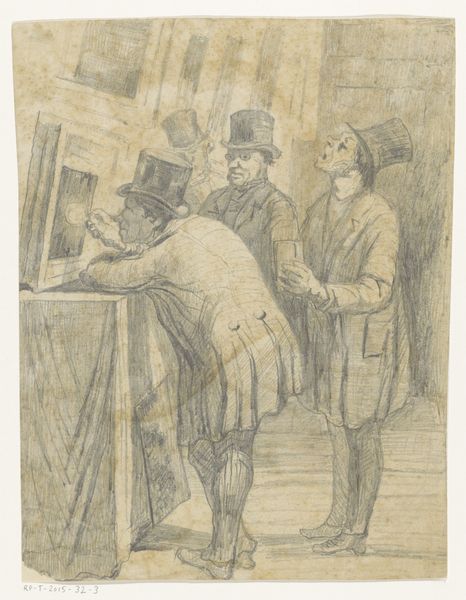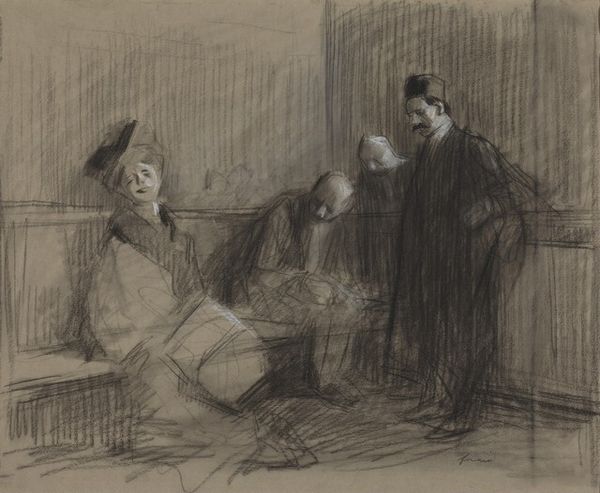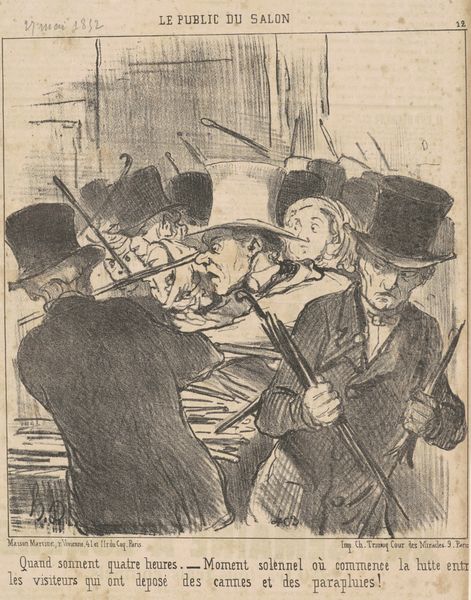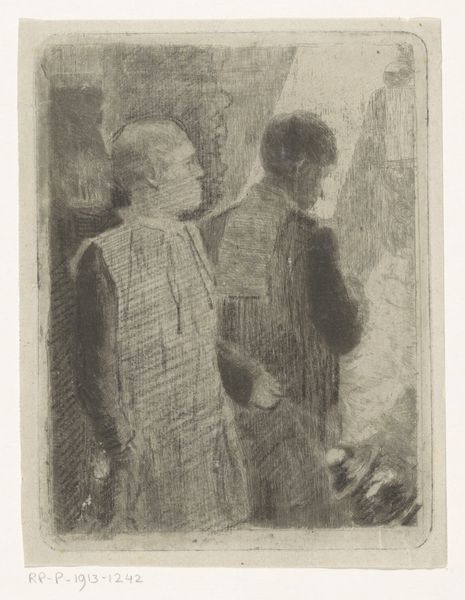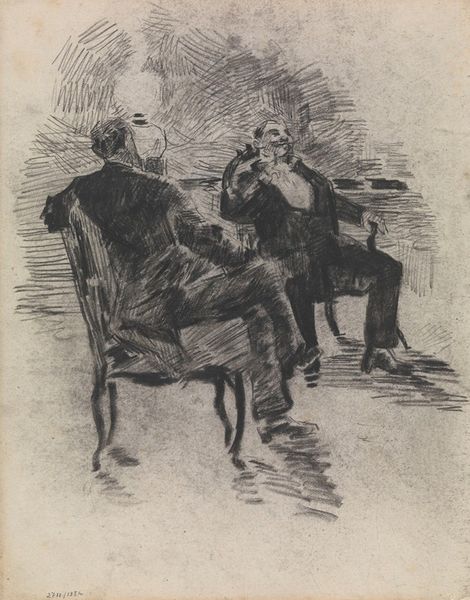
drawing, print, etching, paper
#
portrait
#
pencil drawn
#
drawing
# print
#
impressionism
#
etching
#
paper
#
pencil drawing
#
group-portraits
Dimensions: 298 × 270 mm (image/plate); 334 × 305 mm (sheet)
Copyright: Public Domain
Curator: This is Edgar Degas' "The Two Connoisseurs," created around 1880. It's an etching printed on paper, currently held in the Art Institute of Chicago. Editor: The immediate impression is one of shadowy discretion. The figures are enveloped in this hazy, almost conspiratorial darkness. What's your reading of the compositional structure here? Curator: Well, Degas masterfully employs the etching technique to build up areas of shadow, emphasizing the textures of the clothing. Note how the composition directs our focus to the interaction between the figures themselves. It is a rather balanced asymmetrical relationship. Editor: I see a deliberate social commentary embedded within those shadows. The connoisseur figure embodies the late 19th-century bourgeois male—a position afforded specific access to culture. And the obscured faces make it impossible to connect with them. What is this exchange behind closed doors and fancy top hats? It all smacks of exclusion, don’t you think? Curator: But perhaps that opacity serves the work! Consider Degas’ other works from this period—many of them focus on informal moments, moments of spectatorship, observation. It’s more observational, maybe not a deliberate condemnation, no? We see those compositional elements present here: lines, form, balance, creating dynamic spatial relationships, but to no narrative end. Editor: Yes, Degas gives us these wonderful slices of Parisian life, yet the slice we see reveals the rigid class structures inherent to art culture. It speaks volumes about who has the cultural authority to make those decisions! Curator: That tension between observation and critique certainly gives us something to chew on. Editor: Indeed. Degas challenges the passive viewer and engages them in this historical moment. A great moment, indeed!
Comments
No comments
Be the first to comment and join the conversation on the ultimate creative platform.
